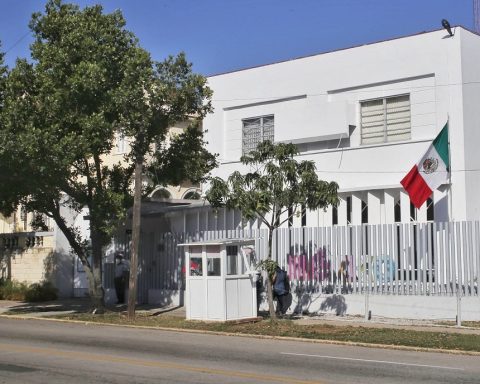The number of children and adolescents, aged 5 to 13, in child labor reached 1.607 million in 2023, according to data from the National Household Sample Survey (Pnad), released this Friday (18). The contingent is 14.6% lower than that recorded in 2022 (1.881 million) and the smallest in the historical series of the survey, which began in 2016.
The IBGE defines child labor as work considered dangerous and harmful to the health and mental, physical, social or moral development of children and which interferes with their schooling. Brazilian legislation prohibits children up to 13 years of age from working under any circumstances.
Teenagers aged 14 and 15 can only work as an apprentice. Those aged 16 and 17 can have formal jobs, but as long as they do not involve unhealthy, dangerous activities or at night. Any situation that deviates from these rules is considered child labor.
According to IBGE, from 2016 to 2019, child labor showed annual declines, going from 2.112 million in the first year of the historical series to 1.758 million in 2019.
After two years without carrying out research, due to the covid-19 pandemic, IBGE found that, in 2022, the indicator had risen for the first time (7% compared to 2019).
IBGE researcher Gustavo Fontes said that the pandemic may have influenced the increase, but without data from 2020 and 2021, it is difficult to make a correlation between the covid-19 pandemic and the worsening of data in 2022.
In 2023, the data improved again due to factors such as the improvement in household income.
“The year 2023 was very favorable for the job market. There was an important gain in per capita household income. There was also a significant increase in average income and the total number of households covered by Bolsa Família. It can also have the effects of public policies aimed at the goal of eliminating child labor,” said Fontes.
Cutouts
The percentage of children and adolescents aged 5 to 17 in child labor represents 4.2% of the total number of people in this age group. In 2022, the share reached 4.9%.
The total number of children aged 5 to 13 subjected to child labor was 346 thousand in 2023, while those aged 14 and 15 reached 366 thousand. The largest contingent was teenagers aged 16 and 17 (895 thousand).
According to the IBGE, the incidence of child labor increases with age: in 2023 1.3% of children aged 5 to 13 were in work; 6.2% faced this situation in the 14 and 15 year old group; and 14.6% among adolescents aged 16 and 17.
Of the total number of children and adolescents involved in child labor, 1.182 million were involved in economic activities, that is, to generate income. The other 425 thousand worked only for self-consumption, that is, the production of goods for use by residents of the household or non-resident relatives, such as animal husbandry, fishing and agriculture.
The North region had the highest proportion of children and adolescents in child labor (6.9%), followed by the Central-West (4.6%) and Northeast (4.5%). Southeast (3.3%) and South (3.7%) had the lowest proportions.
In absolute numbers, the Northeast had the largest number of child laborers (506 thousand). The South had the lowest number (193 thousand) and also showed the biggest drop compared to 2022 (-28.8%).
Dangerous work
The IBGE survey also found that, of the 1.607 million children and adolescents in a situation of child labor, 586 thousand performed activities with risks to their health or safety. The data reveals a drop of 22.5% compared to 2022 (756 thousand)
This indicator also reached the lowest level in the series started in 2016. Those activities listed on the List of Worst Forms of Child Labor, known as the TIP List, were considered risky, according to the Decree 6,481/2008.
Among the victims in this situation last year, 84 thousand were between 5 and 13 years old and 153 thousand were between 14 and 15 years old. The other 349 thousand were 16 and 17 years old. According to IBGE, the majority were men (76.4%) and people of black or mixed race (67.5%).
In 2023, hazardous work was carried out by 65.7% of children aged 5 to 13 who carried out economic activities and by 55.7% of adolescents aged 14 and 15 who carried out this type of activity. Among those aged 16 and 17, the percentage reached 34.1%.
Time spent
According to Pnad, 20.6% of children and adolescents involved in child labor were subjected to this situation for 40 hours or more per week. The highest percentage was found in the oldest age group (16 and 17 years old): 31.1%.
Among young people aged 14 and 15, this share reached 14.1% and, among the youngest (5 to 13 years old) the rate was 0.4%.
Among children aged 5 to 13, IBGE found that child labor did not compromise school attendance, since those subject to this type of activity had an attendance rate of 99.6%, higher than the average for this population ( 99%).
“But we observe that, as age advances, there is a greater commitment to school attendance”, highlights Fontes.
The research found that the school attendance rate among teenagers aged 14 and 15 in a situation of child labor was 94% (compared to 98.3% of the general population in this range), and among those aged 16 and 17 it fell to 81 .8% (compared to 90% of the average for the age group).
Sex and race
Pnad data also shows that in 2023 child labor affected children and adolescents differently, depending on their sex and color or race.
Black or brown people accounted for 65.2% of those in child labor, a percentage that exceeds the share of this color or race group in the total population aged 5 to 17 in the country (59.3%).
Boys made up 63.8% of child laborers, while their proportion in the total population of this age group is only 51.2%.
Performance
Some of the children and adolescents in child labor worked in the trade and repair of vehicles (26.7%) or in agriculture, livestock, forestry production, fishing and aquaculture (21.6%).
The average monthly income of children and adolescents involved in child labor was R$771, below the average for workers in this age group who were not in this situation (R$1,074). For those subjected to hazardous child labor, the average income was even lower (R$735).
Differences in sex and color or race were also found even among those in child labor situations. While the income for white people was R$875, for black and brown people it was R$707. For boys, the average was R$815, above the R$695 received by girls.
Of the total number of children and adolescents aged 5 to 17, 3.7% carried out economic activities (1.427 million). Among children and adolescents living in households benefiting from the Bolsa Família income transfer program, the prevalence was slightly lower: 3.4% of them (or 466 thousand) carried out economic activities.
In relation to domestic tasks, children and adolescents who worked in economic activities were more involved in these tasks (75.5%) than those who did not work (51.7%).
Working in economic activities does not exempt children and adolescents from household chores. In fact, the proportion of those involved in domestic tasks was higher among those who worked (75.5%) than among those who did not carry out any economic activity (51.7%).


















